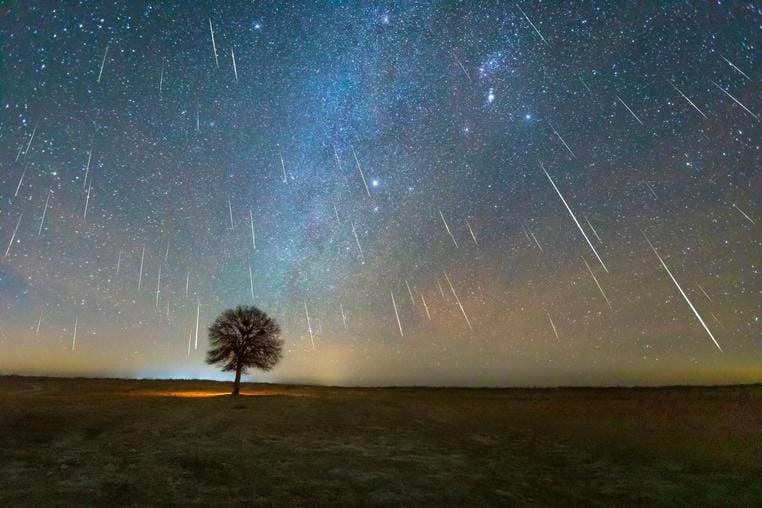If you saw lots of “shooting stars” this weekend during the peak of the Perseid meteor shower, you’ll likely have a burning question that you need an answer to—when is the next one?
There are around a dozen meteor showers per year. The annual peak dates are entirely predictable because Earth’s orbit around the sun is mapped and known. Meteor showers are the result of dust and debris left in the inner solar system by comets. Crucially, it’s only when those streams of material drift across Earth’s orbital path around the sun that we can experience a meteor shower.
If the Perseids are the most popular meteor shower of the year, they’re not quite the most prolific. Besides, there’s a decent chance that this December could see not only the peak of the Geminid meteor shower—known to be the most prolific of all—but also a surprise outburst from the Andromedid meteor shower, which hasn’t been active for over a decade.
Here’s everything you need to know about the five meteor showers coming up in the remaining months of 2023:
1. Orionid meteor shower
Friday/Saturday, October 20/21 sees the peak of an annual meteor shower caused by the world’s most famous comet—1P Halley. Expect about 20 “shooting stars” per hour at the peak, though with a First Quarter Moon they will be tough to see in a bleached night sky. This one to miss.
2. Leonid meteor shower
Peaking overnight on Friday/Saturday, November 17/18, 2023, the Leonid meteor shower is known for bright meteors with persistent trains. Expect about 10-20 “shooting stars” per hour. The moon will be a waxing crescent, leaving a dark sky after midnight. A good night to go stargazing with a heightened chance of seeing a few “shooting stars.”
3. Andromedid meteor shower
Early December —which sees moonless night skies—could see a surprise meteor shower produce about 200 “shooting stars” at its peak. It’s not been active for many decades, but a paper claims that the Andromedid meteor shower could impress in 2023. Known for spectacular outbursts in 1872 and 1885—when it produced thousands of meteors per hour—the Andromedids are predicted to bring “moderate to strong” activity in 2023 and 2036 and “observers should be alert.”
4. Geminid meteor shower
One of the most prolific meteor shower of the year, the Geminids will peak on Wednesday/Thursday, December 13/14, 2023. It’s possible to see up to 120 multicolored “shooting stars” per hour. The peak occurs just a day after New Moon so conditions for the Geminids this year are perfect. As a bonus, it’s possible that Earth will encounter a debris stream from comet 46P/Wirtanen on December 10-12, according to Universe Today. This one’s worth making a plan to observe.
5. Ursid meteor shower
The Ursids only produce about 10 “shooting stars” per hours at the peak, which is on Thursday/Friday, December 21/22, 2023. The moon will be beyond First Quarter, making the night sky bright. This is one to miss.
Best Ways to See a Meteor Shower
All meteor showers are best seen in the small hours after midnight from a location away from light pollution. Take a reclining chair, a blanket (either to lay on and/or to wrap yourself in), switch-off your smartphone (its white light will kill your night vision) and keep your eyes on the skies. Dress warmly—whatever the time of year—have plenty of snacks and hot drinks, and take frequent breaks.
Seeing lots of “shooting stars” requires patience and dedication—and when you see a bright “fireball” it all becomes worth it!
Wishing you clear skies and wide eyes.
Read the full article here










